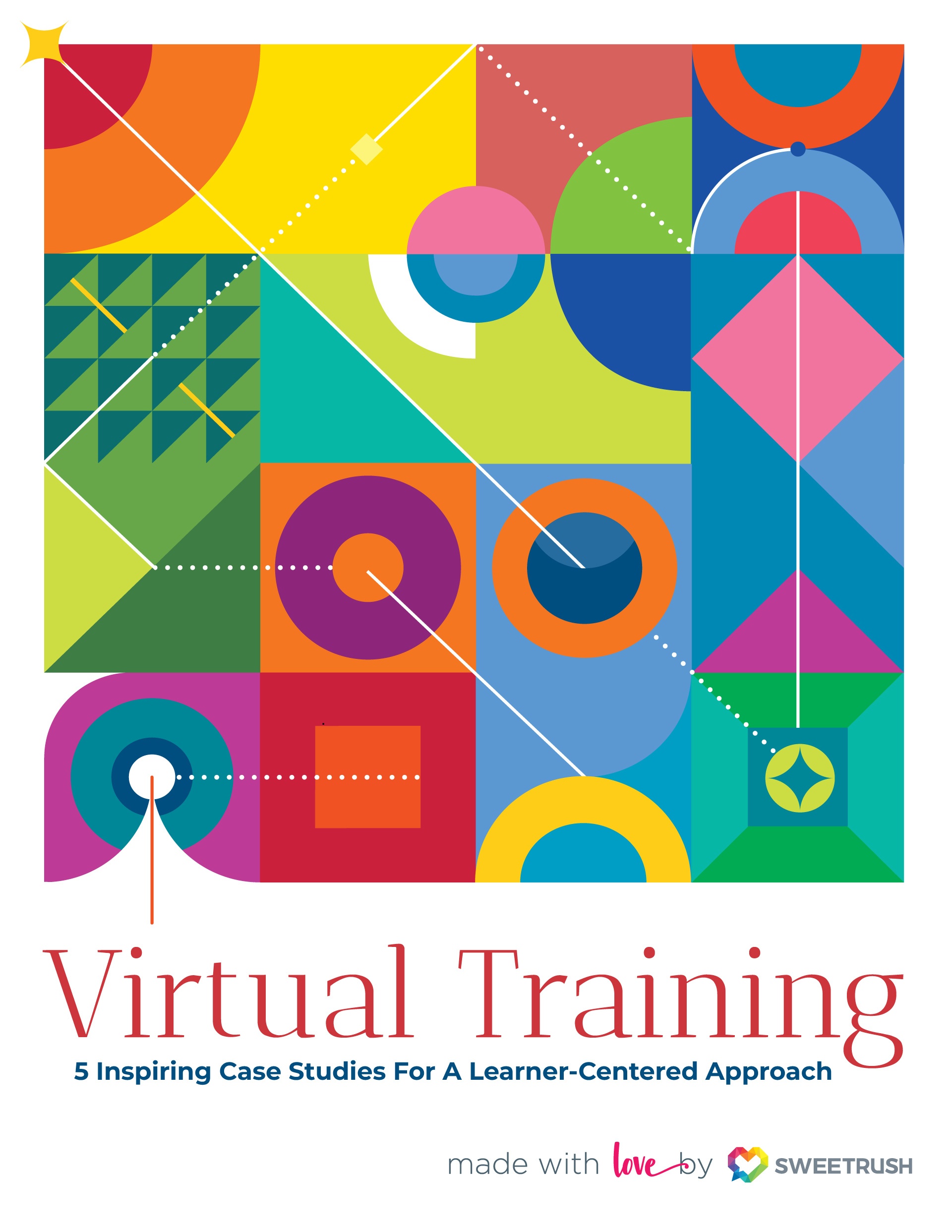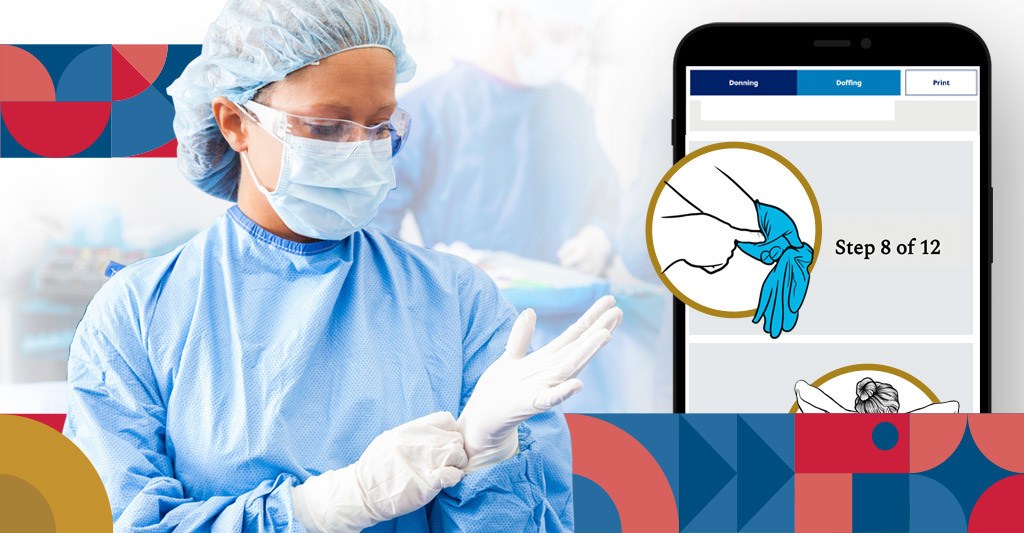Arming Healthcare Workers Against COVID-19
While critical needs arise with the COVID-19 pandemic being persistent, it is essential to arm healthcare workers against the virus as much as possible. This is why creating Just-In-Time learning with the help of rapid development of virtual training must be taken seriously into consideration.

The Front Line: Meeting Learners At The Moment Of Need
She rises at 5:15 a.m., arrives at the COVID-19 unit by 7:15. She receives the handoff information from the night shift. She washes down, dons the yellow gown, shoe covers, hair cover, the N95 mask, gloves, and the eye shield [1].
Like soldiers in the field, our frontline healthcare workers need the right equipment to battle COVID-19. Personal protective equipment (PPE) like masks, gowns, gloves, and goggles is critical to keeping themselves and patients safe.
But access to PPE continues to be a challenge, and healthcare workers are forced to make split-second decisions about which items to use. That means trying new varieties or combinations of PPE—even, due to scarcity, reusing what was once considered single-use PPE.
The COVID-19 situation has also drastically increased the stress our healthcare workers experience on the job. Asking them to learn, retain, and apply potentially shifting new protocols—in situations in which they are physically and emotionally exhausted—only compounds that stress [2].

Arming Our Troops: A Use Case For Just-In-Time Learning
Like a suit of armor, each type of PPE has its own methods for donning (putting on) and doffing (removing); think of a suit of armor with its multiple layers and parts. But unlike the fire-breathing dragons of yore, our modern heroes face an invisible enemy: self-contamination.
Healthcare workers need accessible, up-to-date information to guide them through the processes of donning and doffing. But they have only a few moments to weigh their PPE options and don them. There’s no time to take a course or flip through a manual—and those resources would be woefully out of date by the time they reached learners.
Is this an impasse?
Not at all! It’s a use case for Just-In-Time learning. Just-In-Time learning, also called moment-of-need learning, offers resources for learners to access, wherever and whenever they need. SweetRush’s client-partner, a U.S. government-funded training and education organization, was already doing an incredible job with its existing resources on PPE and disease prevention. The team’s challenge was to produce more training, more quickly. So, what about the rapid development of virtual training?
Organizations can deploy a variety of formats—from video to podcast to printable job aids—to meet learners at their moments of need. This organization needed portable, point-of-need learning and performance support, which led the team to choose a web-based application.
With the web app, learners can pull up the information on their phones anytime, anywhere. They then use the app’s filter mechanism to indicate what types of PPE they have available and whether they are reusing them. The app then provides detailed, highly visual instructions for donning and doffing to help learners shield themselves—and their patients—from the enemy.
Rapid Development For Virtual Training: 9 Tips For Leading The Charge
With the virtual learning solution identified, the team was ready to move. Because of the urgency of the learning need, the rapid development of virtual training was their strategy of choice.
The challenge of rapid development of virtual training is that we want both a quick response to a critical need and an effective learning solution, all at a reasonable price. Yet the iron triangle dilemma pits fast, good, and cheap against one another—and tells us we can only have two out of three.
How can we solve the iron triangle and make rapid development work for virtual training? We at SweetRush have been working on this challenge for years. Here are some tips for successful rapid development of virtual training, straight from the SweetRush arsenal:

1. Set Strict Guidelines For Scope—And Know Where And When You Can Be Flexible
Rapid development of virtual training projects need a “box.” You can limit complexity and interactivity and still build very effective training. Define an approach that’s feasible for the timeline, and stick to it.
However, for larger projects with lots of moving parts, everyone needs to remain flexible as the scope evolves. Finding this balance is both an art and a science—and it’s a skill that improves with experience.

2. Content Readiness Is King And Content Stability Is Queen
Rapid development of virtual training means hitting the ground running. There’s no time to wade through outdated content, conduct extensive SME interviews, or hunt down content updates and approvals.
This project was a clear exception to the rule: given the ever-changing nature of the pandemic situation and new findings about the coronavirus, the learning content was uniquely unstable.
Rapid development of virtual training works when all parties understand the expectations. In this case, all team members shared an understanding and process for responding flexibly and quickly to the client’s iterative change requests.

3. Choose Your Tool For The Rapid Development Of Virtual Training
At SweetRush, we regularly use all of the popular authoring tools (and some of the not-so-popular ones), and we’ve even built our own—twice. We find Articulate Rise to be an excellent choice for rapid development. (See Nos. 5 and 6, “Eliminate phases” and “Eliminate the middleman.”)

4. Assign Great People Who Take Ownership
Because the rapid development of virtual training projects is often limited in complexity and interactivity, you may think you can assign a more junior team. Not so fast! You’ll want known players who can be counted on to produce great work—and, most importantly, who take ownership.


5. Eliminate Phases
Is your content stable? (Of course; you read No. 2, right?) Proceed directly from detailed design or outline to content development inside your authoring tool, skipping the storyboard phase.

6. Eliminate The Middleman
In our rapid development projects, we vastly reduce the producer’s role and even remove our bug-tracking system from the equation. Instructional Designers and graphic designers communicate directly and often, making changes to the course in Rise as they go.


7. Be Hyper-Organized
For larger projects, develop a simple tracking system that can show you the high-level status of every component at a glance. Make sure it can be easily, frequently, and rapidly updated; this will allow you to identify issues and make quick pivots.

8. Stand Up!
The process we use for the rapid development of virtual training is not “Agile” per se, but it’s Agile-inspired. It borrows certain features of Agile and iterative development methodologies, and the “stand up” is one of our favorites. These quick meetings, often held daily, help team members identify bottlenecks and solve problems quickly.


9. Resource In Sprints
For larger projects, identify resources needed on a weekly basis as opposed to longer durations—even if the project is expected to run several months or more.

Mobilizing Your Team For Rapid Development Of Virtual Training
Getting started with the rapid development of virtual training can be daunting, especially when you’re under a time crunch. Staying close to your learner is critical here. Meet them at their moment of need, just as we met ours at the start of her shift in the COVID-19 unit.
Ask yourself: Where are they? What are they doing? What do they need to know to move forward? That 360-degree view of your learner in their work environment will help you determine the best way to reach them.
After you’ve thought through the need, consider your team. If you’ve got a seasoned group who can adapt to a pared-down process, you might have a use case for rapid development. If your team is less experienced or more attached to the traditional development cycle, proceed with caution. Rapid development is a learnable skill for the right team—with the right support and process.
Do you have an iron triangle of your own to solve—that is, a need to develop virtual training that is fast, frugal, and fantastic? Download Virtual Training, SweetRush Style: 5 Case Studies to Inspire a Learner-Centered Approach. In this essential guide, you’ll learn how 5 organizations met their learners’ needs in 5 unique ways. Let their challenges, audiences, and solutions spark your creativity as you design your next virtual training program. Also, join the webinar and get to discover how to inject more creativity in your virtual learning programs.
References:
[1] The Heroism of Health Workers in the Coronavirus Crisis
[2] Dispatches from the frontlines: A critical care nurse's response to COVID19









